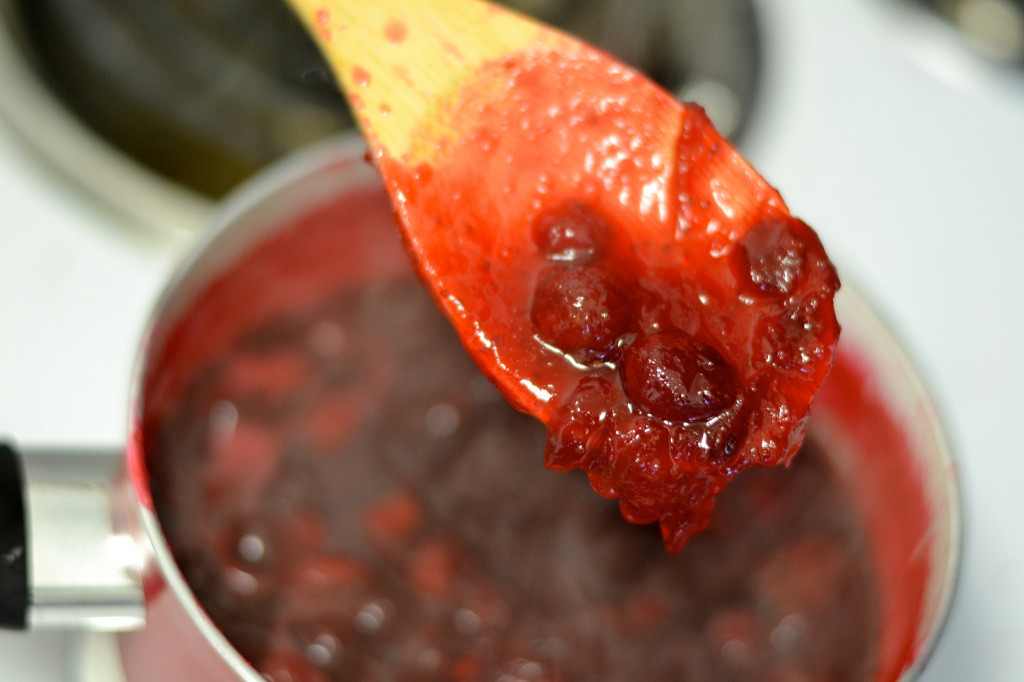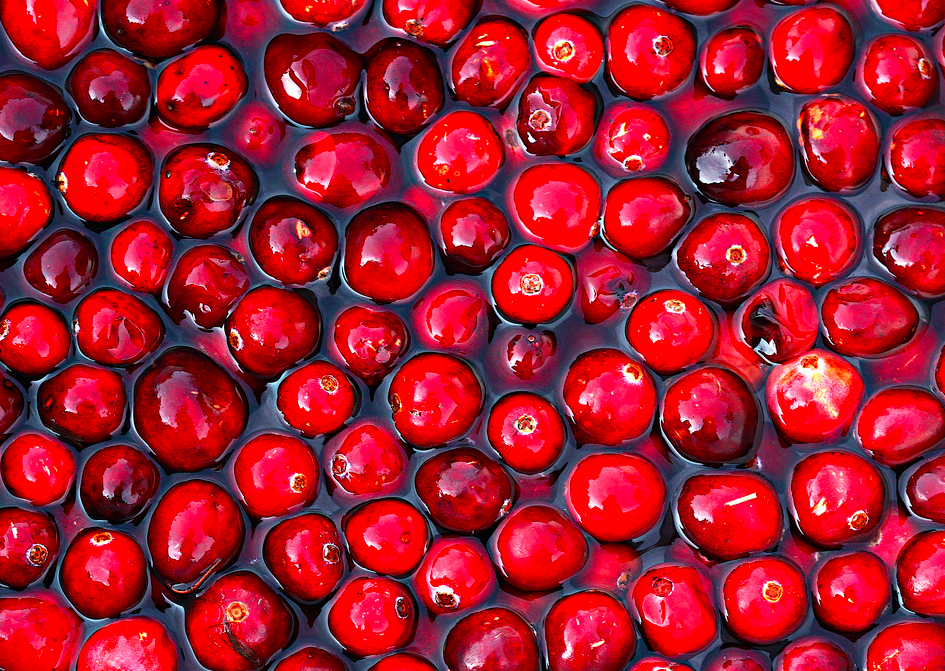Although the sweet, chewy dried cranberry is a delicious topper for the occasional bowl of oatmeal or salad, Thanksgiving dinner is where this fruit truly gets its time to shine. In fact, 20% of America’s annual cranberry consumption happens during the week of Thanksgiving alone, with Ocean Spray supplying 80 million pounds of cranberries just to put cranberry sauce on the Thanksgiving dinner tables of Americans nationwide.
But unlike the cheeseburger or apple pie, the cranberry doesn’t seem to be so wholly American, at first thought — so I did some research as to how this niche berry secured its special place in the Thanksgiving meal.
First off, it’s more American than you might have imagined. The cranberry is one of only three commercially grown fruits native to North America (FYI: The others are the blueberry and the Concord grape).
Native Americans used cranberries as food, medicine and even dye for their clothing — clearly a berry worthy of many thanks. In fact, the most common innovative use of cranberries by the Native Americans was as a preservative mixed in with dried meat, so that they could eat the meat throughout the winter. While there is no actual evidence, it is widely believed that cranberries graced the first Thanksgiving table in Plymouth, Massachusetts in 1621.
So, why the sauce and not just the berries themselves?

Photo by Emma Danbury
Because sugar was a rare luxury during the time of the pilgrims, it’s unlikely that they actually ate cranberry sauce at the first meal — although there are records noting comments about a sweet sauce served at Thanksgiving dinner later in the 17th century.
In the 1930s, the advent of wet harvesting practices made the cranberry growing process much easier. As bogs fill with water, cranberries loosen from their vines and naturally float to the surface, due to their semi-hollow composition.

Photo courtesy of Liz West
The only downfall: the cranberries often appear much less attractive than the whole ones you might find in the store (which are still harvested through a dry process). Ocean Spray capitalized on the fresh but not-so-pretty cranberries by turning them into cranberry juice and, most notably, the canned jellied cranberry sauce so many of us know and love.

Gif courtesy of giphy.com
While I’m usually all for homemade everything, I can’t picture a Thanksgiving dinner without the circular slices of jellied cranberry sauce straight from the can — but that’s not the popular opinion at Washington University in St. Louis. After asking about two hundred students how they eat cranberry sauce at Thanksgiving, I found that about 63% enjoy some form of homemade cranberry dish. A surprising 19% replied that they don’t like cranberry at all.
The ways in which Wash U students eat their cranberry sauce is far more diverse, with the most popular answers being plain, on turkey and with stuffing — although around 30% of respondents asked me if “with everything” could be an answer. Considering that’s also how I enjoy the deliciously sweet Thanksgiving staple, I was more than happy to oblige.
Although the ways most Americans consume cranberries (in sauce, juice, or dried) pack a significant amount of sugar, cranberries are often cited for their high antioxidant content, ability to prevent urinary tract infections and potential to improve dental health — a reassuring note when you think about the mass consumption of the berries during the holiday season.
And now for some cranberry fun facts:
- Pilgrims called the berries “craneberries” upon first sight because the plant’s flowers look like the head of a crane.
- The phrase “cranberry sauce” is repeated several times at the end of John Lennon’s song “Strawberry Fields Forever.”
- If you drop a cranberry, it will bounce like a ball – for the same reason that the berries float in bogs.


